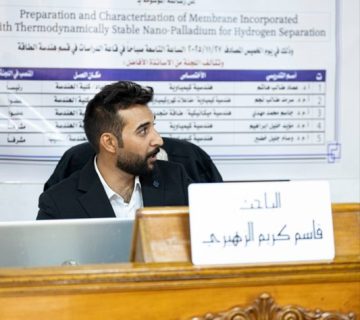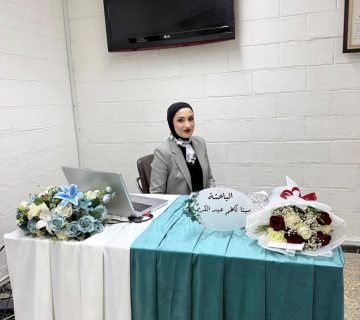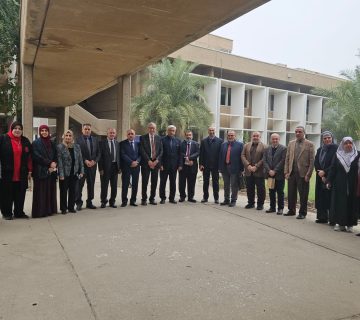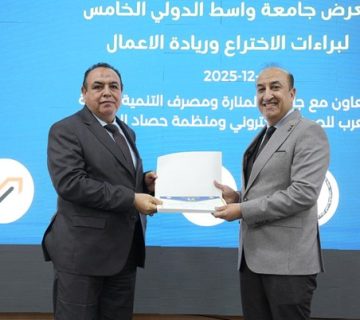It was conducted on Sunday, 29/10/2023, in the meeting hall the discussion of the master’s thesis of the student Roasi Abd El-Raheem Flayh, which is tagged: “Performance of a Vertical Double Pipe Heat Exchanger “.
The discussion committee consisted of names listed below:
1- Asst. Prof. Dr. Munther A. Musa (Chairman)
2- Asst. Prof. Dr. Assel K. Sheaa (Member)
3- Asst. Prof. Dr.Sarmad A. Abdul Hussein (Member)
4-Asst. Prof. Dr. Ayser M. Flayh (Supervisor)
The aim of the thesis was to investigate the influence of bubbles of air injection on the thermal performance of vertical counterflow double-pipe heat exchanger with outer pipe (D_o=68mm,D_i=66mm) and length 500 mm, inner pipe (D_o=29mm,D_i=28mm) and length 800 mm. This study was carried out in two parts, experimental and numerical with entirely different operational parameters compared to similar research in the literature. The air was injected with amounts varied as (0.5, 1, 1.5, and 2 LPM) into cold water. Three rings were used in different distances from hot water pipe and with different specifications inside the heat exchanger, these different rings were placed at the bottom of the annular spaces as ring1(R1) with a diameter of 57mm and number of holes 36, ring2(R2) with a diameter of 47mm, and 24 holes, and ring3(R3) with 37mm diameter, 12holes all these rings have a diameter of perforation equal to 0.3mm. Also, the cold water was used with a range of (3, 3.5, 4, 4.5, and 5 LPM), and hot water was fixed at (3 LPM). The effect of changing air flow rate through these different rings with changing cold water flow rate was investigated through this research. (Ansys:21 workbench: Fluent) was used to simulate the computational fluid dynamics for the Three-dimensional model under the control of equations of volume fraction for the Eulerian multiphase flow model and the turbulence RNG model. The numerical part of the research was carried out to study the effect of air bubble injection numerically on heat transferred amount. The effect of varying these parameters on overall heat transfer (U), number of heat transfer units (NTU), effectiveness, pressure drop, and friction factor were conducted with and without air injection and then compared. Results found the maximum enhancement was obtained from ring2. Finally, air injection was an optimal method used to enhance the heat-transferred amount, and between Three rings, the best ring that gave the most improvement was ring2.
After the scientific discussion by the members of the discussion committee, the researcher received a rating of (very good).








